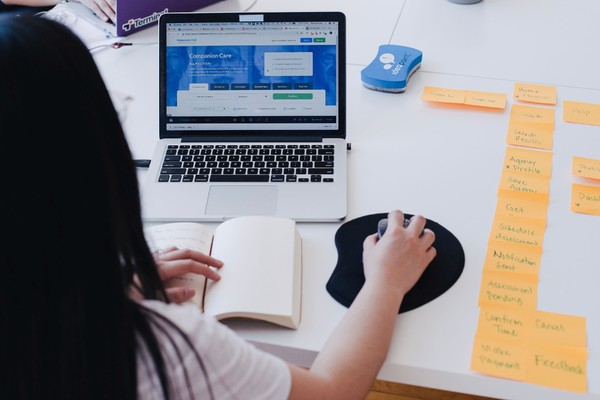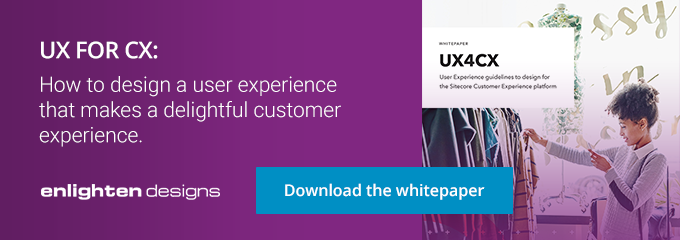What Is User-Centred Design?
User-centred design is a broad term that describes design processes in which end-users influence a product or service’s ultimate look and feel. It refers to both a philosophy and a set of design methods.
The idea of user-centred design isn’t confined to a single industry. Today, there are a variety of products and services created using these principles. However, we’ll focus on the relationship between user-centred design and software applications.
The History of User-Centred Design
The concept of user-centred design isn’t entirely new, even if the term has only made headlines in the past decade or so. In the 1980s, Donald Norman’s lab at the University of California San Diego coined the term. Norman continued developing the idea over the years and it became more popular.
As computers and software became a part of our everyday lives, the importance of user-centred design (and customer experience) grew. It wasn’t enough to introduce new software or a new app; your product or service had to delight end-users. At that point, user-centred design started becoming a competitive differentiator for all companies, whether they were digital-first or not.
What’s Involved in User-Centred Design?
There are four broad steps to user-centred design:
- Research
- Design
- Adapt
- Measure
Research
To design something that’s focused on the end-user, the designer has to understand the end-user. This understanding comes through research.
During the research process, the designer asks questions such as:
- Who is the user, and why is this person using this tool?
- What is the user trying to do?
- How much experience does the user have with this tool?
- What information does the user need to use this tool, and in what format should that information be presented?
- How does the user think the tool should work?
There are a few ways to get this information from end-users. Designers could hold focus groups, interview end-users, survey them, or observe them.
Design
Once designers have researched end-users and their needs, they create prototypes of the product or service. This might involve sketches or creating wireframes.
It might seem counter-intuitive that the designer doesn’t create the final product at this stage. However, the thing about user-centred design is that it’s iterative, meaning that a product is designed and redesigned until it meets requirements. After the first prototype or mockup, the designer asks for feedback from users, and then redesigns the product or service based on those comments.
Adapt
Adaptation could be part of the design process, but it’s important enough that it merits its own step. In this process, the designer adapts the design based on feedback.
To keep the design process efficient, it’s critical to communicate feedback from users to designers quickly. The longer it takes for designers to receive comments, the longer it will take them to produce a final design.
Measure
You can’t improve something if you don’t measure it. The metrics you use will depend on your product or service. Let’s say you’re designing an e-commerce site. A successful site would have a low cart abandonment rate because it’s not frustrating for the user to go through the purchase process.
In general, designers should also look at how long it takes for a user to complete a task. If a site takes too long to load, users won’t like it.

User-Centred Design and Business Success
Why should businesses care about user-centred design? There are four reasons that apply to your customers and to your employees:
- Reduced support costs
- Increased conversion rates and revenue
- Increased efficiency
- Increased engagement
Reduced Support Costs
How many times have you heard, ‘I just don’t understand how this software works!’? When designers don’t create products or services with user-centred design principles in mind, end-users find them difficult to navigate. They call the support department to help them with the problem.
User-centred design, on the other hand, creates intuitive products and services. Neither customers nor employees will get stuck using these solutions, which reduces support costs.
Increased Conversion Rates and Revenue
Another benefit of user-centred design is that it can increase conversion rates (and thus revenue). How so?
Go back to the example of the e-commerce site. When it’s easy to navigate a site, shopping becomes a joy. You’ll see more purchases, and as a result, higher profits.
Increased Efficiency
Increased efficiency is a benefit user-centred design brings to your end-users and your employees alike. When it’s easier to use your products and solutions, people can complete tasks faster.
From the employee side, workers complete their tasks faster. On the customer side, users don’t feel as though they have to waste time trying to get things done or get the information they want. They’re more likely to turn to you the next time they need something.
Increased Engagement
It’s much more cost-effective to retain a client than to find a new one. User-centred design improves the customer experience, which leads to higher levels of user engagement.
When you offer a positive customer experience, your customers will want to keep working with you. This also applies to services and software you use internally; if your employees find it easy to use the solutions available at work, they’ll be more engaged in their jobs, which leads to higher retention levels over time.
Enlighten Designs: Helping Your Business Benefit from User-Centred Design
Since 1998, Enlighten has helped its clients have and provide amazing digital experiences. We put users at the centre of the design process so that their customer experience is delightful. To learn more about user-centred design, download our User Experience Guidelines paper or contact us.

